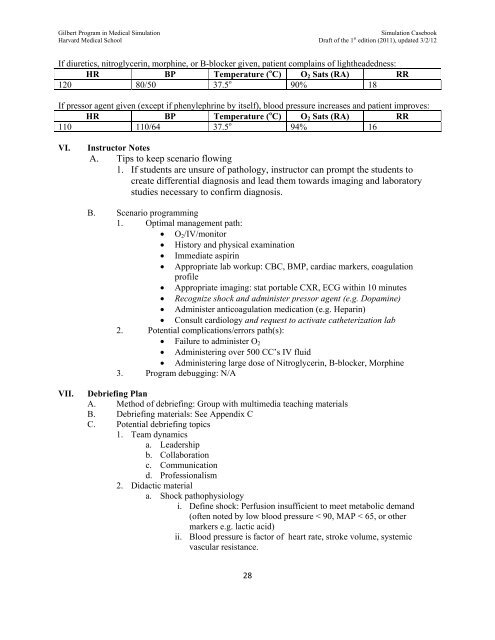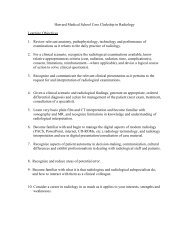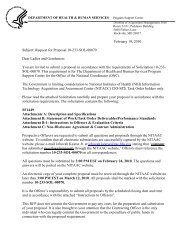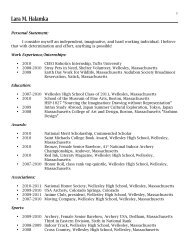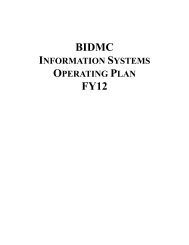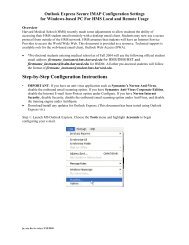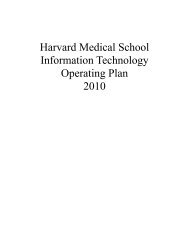SIMULATION CASEBOOK - MyCourses
SIMULATION CASEBOOK - MyCourses
SIMULATION CASEBOOK - MyCourses
Create successful ePaper yourself
Turn your PDF publications into a flip-book with our unique Google optimized e-Paper software.
Gilbert Program in Medical Simulation<br />
Simulation Casebook<br />
Harvard Medical School Draft of the 1 st edition (2011), updated 3/2/12<br />
If diuretics, nitroglycerin, morphine, or B-blocker given, patient complains of lightheadedness:<br />
HR BP Temperature ( o C) O 2 Sats (RA) RR<br />
120 80/50 37.5 o 90% 18<br />
If pressor agent given (except if phenylephrine by itself), blood pressure increases and patient improves:<br />
HR BP Temperature ( o C) O 2 Sats (RA) RR<br />
110 110/64 37.5 o 94% 16<br />
VI.<br />
Instructor Notes<br />
A. Tips to keep scenario flowing<br />
1. If students are unsure of pathology, instructor can prompt the students to<br />
create differential diagnosis and lead them towards imaging and laboratory<br />
studies necessary to confirm diagnosis.<br />
B. Scenario programming<br />
1. Optimal management path:<br />
O 2 /IV/monitor<br />
History and physical examination<br />
Immediate aspirin<br />
Appropriate lab workup: CBC, BMP, cardiac markers, coagulation<br />
profile<br />
Appropriate imaging: stat portable CXR, ECG within 10 minutes<br />
Recognize shock and administer pressor agent (e.g. Dopamine)<br />
Administer anticoagulation medication (e.g. Heparin)<br />
Consult cardiology and request to activate catheterization lab<br />
2. Potential complications/errors path(s):<br />
Failure to administer O 2<br />
Administering over 500 CC’s IV fluid<br />
Administering large dose of Nitroglycerin, B-blocker, Morphine<br />
3. Program debugging: N/A<br />
VII.<br />
Debriefing Plan<br />
A. Method of debriefing: Group with multimedia teaching materials<br />
B. Debriefing materials: See Appendix C<br />
C. Potential debriefing topics<br />
1. Team dynamics<br />
a. Leadership<br />
b. Collaboration<br />
c. Communication<br />
d. Professionalism<br />
2. Didactic material<br />
a. Shock pathophysiology<br />
i. Define shock: Perfusion insufficient to meet metabolic demand<br />
(often noted by low blood pressure < 90, MAP < 65, or other<br />
markers e.g. lactic acid)<br />
ii. Blood pressure is factor of heart rate, stroke volume, systemic<br />
vascular resistance.<br />
28


